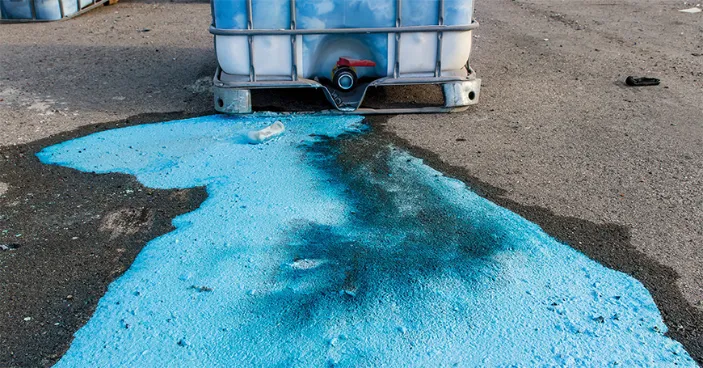
Choosing the right chemical absorbent mat can make or break workplace safety. The wrong mat might fail to handle spills, leading to safety hazards and costly fines. High-traffic areas need durable solutions, while smaller spills may require lighter options. Products like Chemical Absorbent Rolls ensure compliance and keep your team safe.
Key Takeaways
Find out what chemicals are in your workplace. Pick mats that work well with those chemicals to clean spills better.
Think about how often and how much spills happen. Use light mats for small spills and strong mats for big ones to stay safe and work well.
Follow safety rules. Teach workers how to use mats correctly and make a spill plan to keep everyone safe and follow the law.
Identify Your Workplace Needs

Understanding your workplace needs is the first step in choosing the right chemical absorbent mat. Every workplace is different, so you’ll want to evaluate the types of chemicals you handle, the frequency of spills, and the safety standards you must follow.
Types of Chemicals and Their Properties
The chemicals you work with play a huge role in determining the right mat. Some mats are designed for specific substances, while others are versatile enough to handle a variety of spills. Here’s a quick guide to help you match mats to common chemicals:
Chemical Type | Properties Affecting Mat Selection |
|---|---|
Bases | Chemical-resistant mats with fast wicking absorbency are ideal for bases. |
Acids | Lightweight mats that absorb up to 98% sulfuric acid work best for acids. |
Solvents | Polypropylene mats effectively absorb solvent spills. |
Paints | Mats designed for paint spills prevent residue and ensure a clean surface. |
Coolants | Coolant-resistant mats are durable and won’t degrade over time. |
Hazardous Chemicals | Hazmat absorbent mats are perfect for large spills and persistent leaks of dangerous substances. |
By identifying the chemicals you use, you can ensure your absorbent mats are compatible and effective.
Spill Volume and Frequency
How often do spills occur in your workplace? Are they minor drips or large-scale leaks? For frequent, small spills, lightweight mats like UPQUARK’s Hazmat Chemical Absorbent Pads are a great choice. They’re easy to deploy and handle. For larger spills, consider heavy-duty rolls that can absorb significant volumes. Matching the mat’s absorption capacity to the spill volume ensures you’re always prepared.
Workplace Safety and Compliance Standards
Safety should always be your top priority. Using the right chemical absorbents not only protects your team but also keeps you compliant with industry regulations. Here are some key points to keep in mind:
Choose absorbent materials that meet safety standards for your industry.
Train employees on proper spill response and mat usage.
Develop a spill response plan that aligns with OSHA requirements.
By following these steps, you’ll reduce risks and create a safer work environment.
Features to Look for in a Chemical Absorbent Mat
When choosing a chemical absorbent mat, you’ll want to focus on features that ensure efficiency and reliability. Let’s break down the key aspects to consider.
Absorption Capacity and Thickness
The absorption capacity of a mat determines how much liquid it can handle. You’ll need a mat that matches the volume of liquid spillage in your workplace. For small spills, lightweight absorbent pads work well. For larger incidents, thicker mats or rolls with higher absorption capacities are better.
Mats made from polypropylene are especially effective. They can absorb a variety of substances, including acids, bases, and solvents. Plus, they come in different thicknesses to suit your needs. Some mats even have textured surfaces to improve traction and reduce slippage, adding an extra layer of safety during clean-up.
Tip: Always check the mat’s specifications to ensure it can handle the type and volume of liquid spillage you encounter most often.
Material Type and Chemical Compatibility
Not all mats are created equal. The material plays a huge role in how well a mat performs. Polypropylene is the go-to material for chemical absorbent mats. It’s versatile and works with many chemicals, from hazardous acids to oil-based liquids.
For workplaces dealing with specific substances, you’ll find tailored options like grease-absorbing mats or battery acid absorbent mats. These specialized products ensure universal absorbency and prevent damage to floors or equipment.
Durability and Resistance to Wear
Durability matters, especially in high-traffic areas. A mat that wears out quickly won’t provide long-term value. Look for mats designed to resist wear and tear, even when exposed to harsh chemicals. UPQUARK’s Hazmat Chemical Absorbent Pads and Rolls, for example, are built to last while maintaining their absorbent properties.
Durable mats not only save you money but also reduce the risk of accidents caused by degraded materials. They’re a smart investment for any workplace focused on safety and efficiency.
Remember: A durable mat is your first line of defense against spills and leaks, ensuring a safer environment for everyone.
Matching Spill Absorbent Products to Workplace Scenarios

Choosing Mats for Minor Spills
Minor spills happen more often than you think, and having the right absorbent mat on hand can make all the difference. For these smaller incidents, lightweight absorbent pads are your best bet. They’re easy to store, quick to deploy, and perfect for cleaning up spills without wasting resources.
Here’s how you can choose the right mat for minor spills:
Assess how frequently spills occur and their typical volume.
Make sure the mats you select comply with workplace safety standards.
Think about the environmental impact of used absorbent materials and plan for proper disposal.
UPQUARK’s Hazmat Chemical Absorbent Pads are a great choice for minor spills. Their lightweight design makes them easy to handle, and they’re highly effective at absorbing a variety of chemicals.
Selecting Mats for Large-Scale Spill Containment
Large-scale spills require heavy-duty solutions. You’ll need absorbent mats with high capacity and durability to handle these situations effectively. Look for mats made from sustainable materials, like polypropylene, to minimize environmental impact.
To manage large spills efficiently:
Place mats in high-risk areas, such as fueling stations or chemical storage zones.
Overlap mats to avoid gaps and ensure complete coverage.
Regularly inspect mats and replace them before they reach full saturation.
UPQUARK’s absorbent rolls are ideal for large-scale spill containment. With lengths up to 50 meters, they provide extensive coverage and can absorb significant volumes of liquid.
Using Mats for Hazardous or Corrosive Chemicals
When dealing with hazardous or corrosive chemicals, safety is your top priority. You need mats specifically designed to handle these substances without reacting or degrading. Polypropylene mats, like UPQUARK’s Hazmat Chemical Absorbent Pads and Rolls, are perfect for this job. They’re resistant to acids, bases, and unknown liquids, ensuring safe and efficient clean-up.
These mats are also engineered to maintain stability after absorbing chemicals, reducing risks to your team and equipment. Whether it’s a persistent leak or an unexpected spill, having the right absorbent mat ensures you’re prepared for any scenario.
Pro Tip: Always keep a stock of absorbent mats tailored to the chemicals you handle. This ensures quick response times and minimizes potential hazards.
Cost and Disposal Considerations
Balancing Cost-Effectiveness with Performance
Finding the right balance between cost and performance is key when choosing chemical absorbent products. You don’t want to overspend, but cutting corners can lead to safety risks and inefficiency. Lightweight mats are great for minor spills and cost less, while heavy-duty options handle larger spills and last longer. Think about your workplace needs and choose mats that match your spill scenarios.
UPQUARK’s Hazmat Chemical Absorbent Pads and Rolls offer excellent value. They’re designed to absorb a wide range of chemicals while maintaining durability. This means you’ll replace them less often, saving money in the long run. Investing in high-quality mats ensures effective clean-up and reduces the risk of accidents caused by inadequate materials.
Proper Disposal of Chemical Absorbents
Disposing of used absorbent materials properly is just as important as choosing the right mat. Mishandling disposal can harm the environment and lead to regulatory fines. Here are some recommended methods:
Energy Recovery: Convert non-recyclable absorbents into heat, fuel, or electricity.
Recycle Absorbent Materials: Send used mats to facilities that recycle them into raw materials.
Reuse Absorbent Materials: Opt for reusable pads and rags to cut costs and reduce waste.
Always check local guidelines to ensure you’re following proper disposal practices. This keeps your workplace compliant and minimizes environmental impact.
Environmental and Regulatory Compliance
Environmental and regulatory compliance should always be on your radar. Improper disposal of chemical absorbents, especially those used with hazardous substances, can lead to serious consequences. Regulations vary by region, so it’s essential to stay informed about local requirements.
Choosing eco-friendly mats, like those made from polypropylene, helps reduce your environmental footprint. UPQUARK’s absorbent products are designed with safety and compliance in mind, making them a reliable choice for workplaces handling hazardous chemicals. By following disposal rules and using high-quality mats, you’ll protect both your team and the planet.
Choosing the right absorbent mat is essential for maintaining workplace safety and efficiency. Start by assessing your needs:
Identify the chemicals you handle.
Match the mat material to those chemicals.
Pinpoint where mats are most needed in your facility.
Also, consider spill frequency, volume, and compliance with safety standards.
High-quality mats, like UPQUARK’s Hazmat Chemical Absorbent Pads and Rolls, offer unmatched benefits. Their polypropylene material resists hazardous liquids, while their versatile design works for both large spills and localized clean-ups. Plus, their packaging ensures durability and visibility, even in tough conditions.
Investing in the right products ensures quick spill response, prevents accidents, and keeps your workplace compliant. Choose the right absorbent mat today to protect your team and environment.
FAQ
How do I know which UPQUARK absorbent mat is right for my workplace?
Start by identifying the chemicals you handle and the spill volume. UPQUARK offers lightweight pads for small spills and heavy-duty rolls for larger incidents.
Can UPQUARK mats handle unknown chemical spills?
Yes! UPQUARK’s Hazmat Chemical Absorbent Pads and Rolls are versatile. They absorb acids, bases, and even unknown liquids, ensuring safety in unpredictable situations.
Are UPQUARK absorbent mats reusable?
No, UPQUARK mats are single-use for maximum safety. Proper disposal ensures compliance with environmental regulations and prevents chemical reactions in reused materials.
See Also
Selecting Ideal Universal Absorbent Socks for Your Job
Evaluating UPQUARK Marine Absorbents for Oil Spill Response

